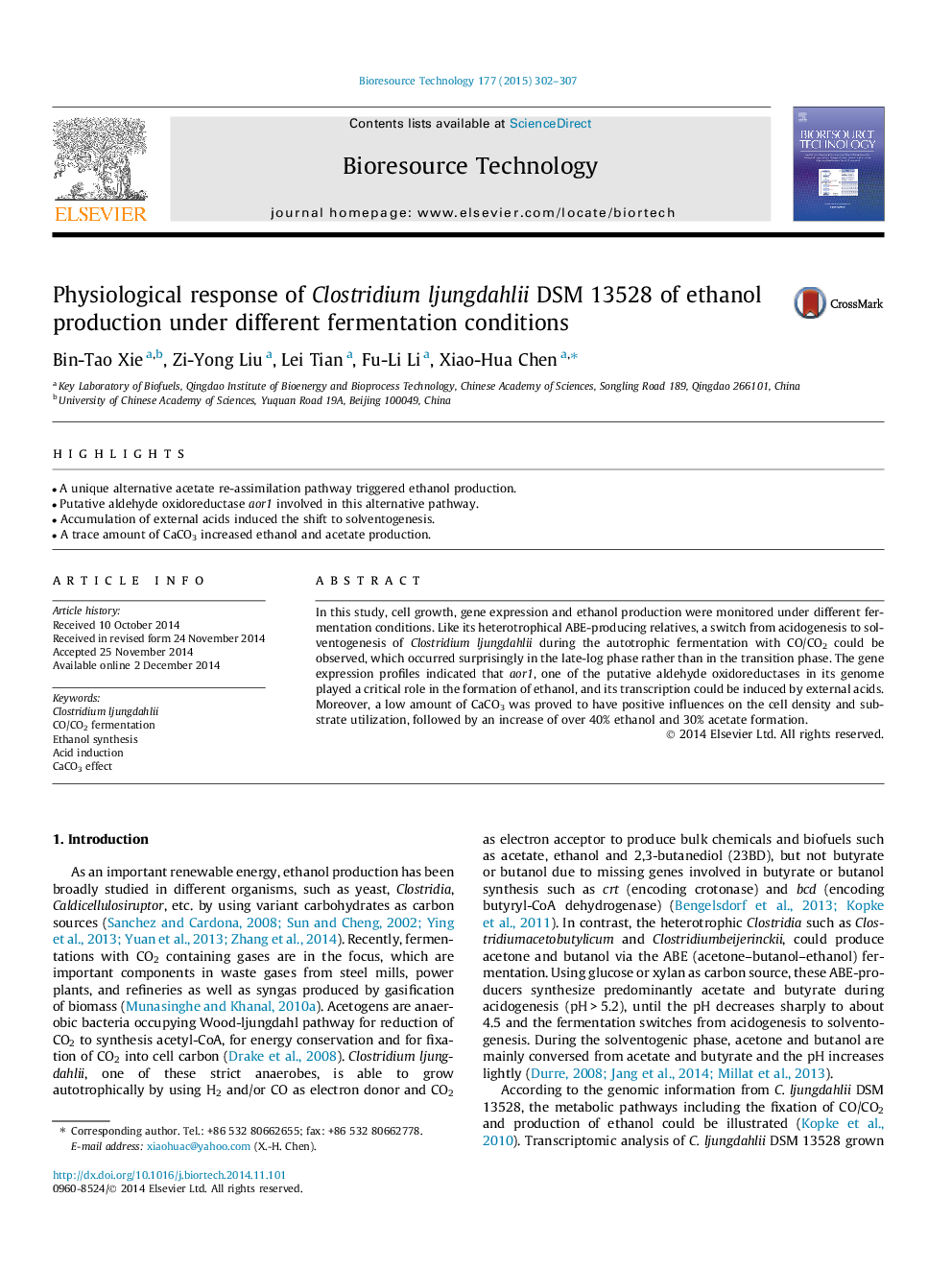| کد مقاله | کد نشریه | سال انتشار | مقاله انگلیسی | نسخه تمام متن |
|---|---|---|---|---|
| 680220 | 1459966 | 2015 | 6 صفحه PDF | دانلود رایگان |

• A unique alternative acetate re-assimilation pathway triggered ethanol production.
• Putative aldehyde oxidoreductase aor1 involved in this alternative pathway.
• Accumulation of external acids induced the shift to solventogenesis.
• A trace amount of CaCO3 increased ethanol and acetate production.
In this study, cell growth, gene expression and ethanol production were monitored under different fermentation conditions. Like its heterotrophical ABE-producing relatives, a switch from acidogenesis to solventogenesis of Clostridium ljungdahlii during the autotrophic fermentation with CO/CO2 could be observed, which occurred surprisingly in the late-log phase rather than in the transition phase. The gene expression profiles indicated that aor1, one of the putative aldehyde oxidoreductases in its genome played a critical role in the formation of ethanol, and its transcription could be induced by external acids. Moreover, a low amount of CaCO3 was proved to have positive influences on the cell density and substrate utilization, followed by an increase of over 40% ethanol and 30% acetate formation.
Journal: Bioresource Technology - Volume 177, February 2015, Pages 302–307